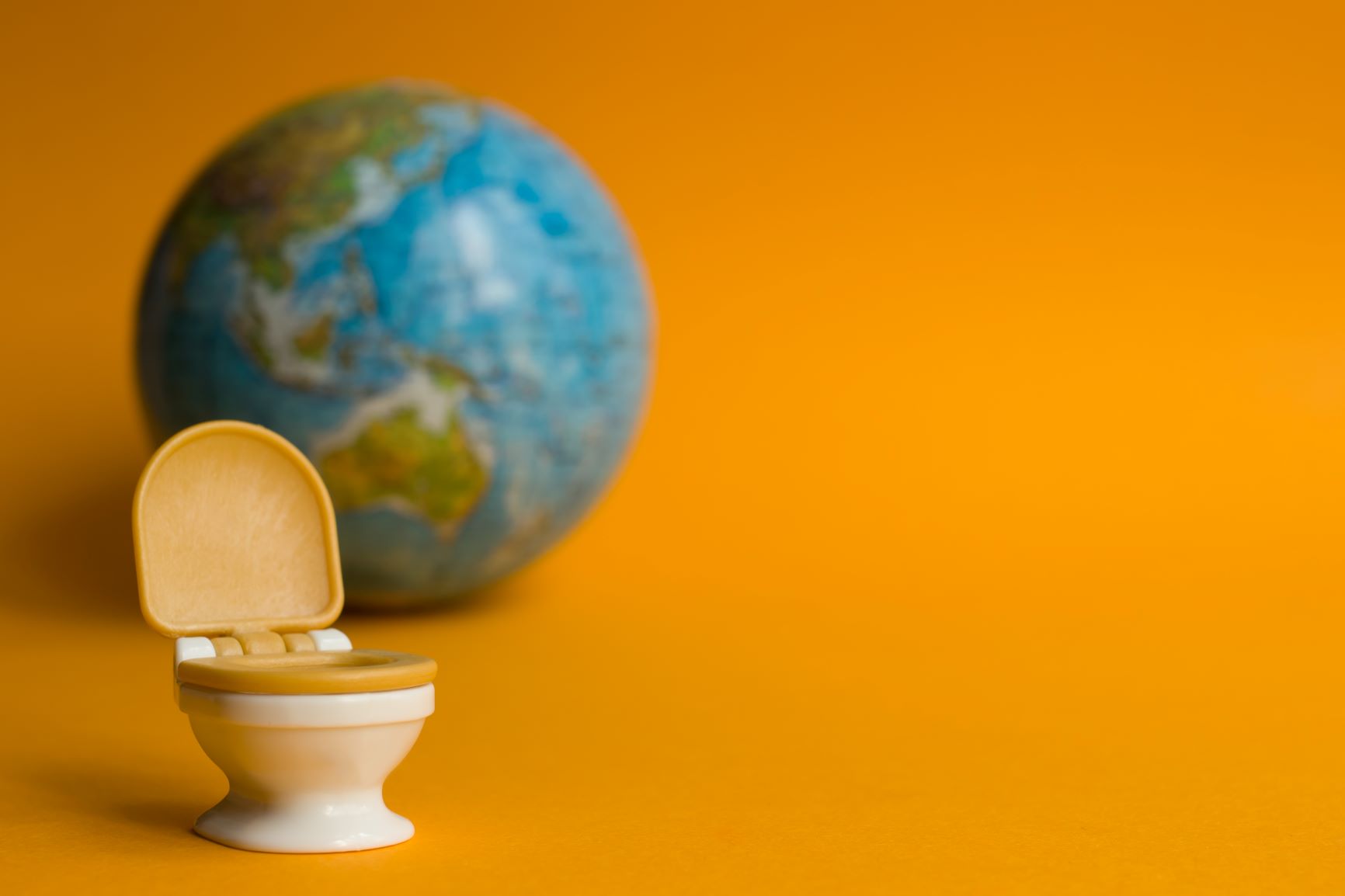
Let’s discuss poop. Everyone does it, but honestly, it’s not talked about enough, especially when it comes to your health. It might seem gross at first, but you should study your stool to better understand your own gut health.
The facts below will not only educate you about your personal health, but the health of the planet and how you can help reduce animal waste which affects waterways, marine-life, and human health. You will also find some historically noteworthy and hysterically funny poop facts. View the entire visual on poop facts here.
Fun Poop Facts
From leaving poop on the moon to a presidential portable toilet, here are some memorable poop facts.
1. Neil Armstrong Left Four Bags of Poop on the Moon in 1969
When Neil Armstrong landed on the moon in the summer of 1969, he left four bags of poop on the moon. Other astronauts who have successfully landed on the moon have also lightened their load for their return trip home. These astronauts have left “defecation collection devices” on the moon
2. Former President George W. Bush Had a Portable Toilet Sent to Austria in 2006
Former President George W. Bush made Austrian headlines in 2006 when the White House flew a special portable toilet to Vienna for Bush’s personal business. At the time, the U.S. Government feared a foreign intelligence agency might try to trap and examine Bush’s waste material. Talk about an extra layer of security.
3. The Longest Poop Was Rumored to Be 26 Feet.
Actually, this one is just a fun tidbit rather than a fact. It was once believed that a woman from Ann Arbor, Michigan set the record for the longest single excrement ever recorded back in 1995. It was supposedly a 26-foot continuous log — the exact length of her colon. But, this was bull. It was actually an exhibit, "Within the Contest of No Contest", by an artist named Michelle Hines that featured what she claimed was the world’s largest poop. The whole thing was a farce. The exhibit was intended to make fun of the absurdity of some other world records.
In fact, the world’s longest poop is 7.9 inches long and almost 2 inches wide. It was made by a viking in the 9th century (the record is 1,200 years old). It was discovered fossilized during an excavation in the UK. Now, ain't that some sh*t.
4. Mt. Everest Porters Schlep 28,000 Pounds of Human Waste Each Climbing Season
When climbing Mt. Everest, you’re not just climbing the highest mountain in the world, you’re also climbing a mound of poop. During the climbing season, local porters working on Everest stated they schlep around 28,000 pounds of human waste.
Unfortunately, a lot of the waste matter is dumped into Gorak Shep, a frozen lakebed, which risks contaminating the local water supply. Even worse, there’s an estimated 17,000 pounds of human waste left on the mountain each season.
Human Poop Facts
Everyone poops. Pooping is your body’s natural way of excreting digested waste from your body. Your stool can reveal important health information, so don’t be afraid to examine it!
5. Water Makes up About 75% of Stool
Water makes up about 75% percent of poop. The rest, which causes the poop to stink, is a combination of both dead and live bacteria, mucus, and fiber.
6. Poop Is Typically Brown Due to Stercobilin
Ideally, you want your poop to be the color of chocolate brown. Stercobilin is the main reason for your feces’ brown color. Stercobilin is a chemical derived from hemoglobin in broken-down red blood cells. Hemoglobin mixed with bile, the fluid from your intestines to break down fat, creates stercobilin.

7. Females Have a More Difficult Time Pooping Due to Additional Organs
Females have more difficulty passing food through their digestive tract. Females have more internal organs (the uterus and ovaries) compared to males. These additional organs cause females to typically have a wider pelvis and longer colon length. On average, females’ colons are ten centimeters longer than males. These anatomical differences also make females more susceptible to bloating than males. Ironically, males typically spend more time on the toilet than females.
8. The Ideal Poop Should be a Continuous Log That Sinks
The healthiest poop is one continuous log that sinks to the bottom of the toilet. This is one reason people refer to pooping as cutting the rope. Do note that floating stool is usually a sign of poor nutrition. Furthermore, pooping should also be effortless. If you experience trouble pinching a loaf, consider using a TUSHY ottoman to help debulk.

10. Evolution is to Blame for Why Humans Think Poop is Gross
Humans disdain poop and consider it gross due to evolution. Biologically, humans have adapted psychologically to stay away from infectious diseases. Since human and other organisms’ waste contains bacteria and even parasites, this avoidance behavior to poop is one protective measure. Still though, there’s no justifiable reason why men feel more comfortable pooping around their partner than women do.
11. On Average, Humans Pass Gas 10 to 18 Times Each Day
It can be slightly embarrassing to fart but know that it’s normal and happens daily to everyone. On average, humans pass gas 10 to 18 times each day. This flatulence occurs due to the colon being filled with bacteria that release gas, which is known as endogenous gas.
12. People Poop Anywhere From 3x a Day to 3x a Week
People’s bowel patterns vary widely depending on their sex, diet, age, activity level. There is no magic number, but generally speaking, you should poop anywhere from three times a day to three times a week.

The Environment and [Poop] Waste
The environment is heavily impacted by human, bovine, and dog waste. Globally, animal and human waste are problematic and it affects certain areas of the world more than others. To help with paper waste, consider using the TUSHY Travel Bidet when on the go.
13. Cows Produce 250 to 500 Liters of Methane Every Day
There are 1.4 billion cows on Earth, and each of these bovine creatures produces 250–500 liters of methane each day. Cows create methane in two ways: through their digestion and their waste. Once released, methane, like other greenhouse gases, is trapped under the sun's rays which causes the earth to warm up.
For humans, the cattle industry is one of the main contributors to global warming, with 40% of methane stemming from agriculture. To help reduce these methane emissions, try to eat less red meat and substitute your dairy products with similar alternatives.
14. Over Half of China’s Freshwater Lakes are Polluted
When you think of water pollution, you might picture an image of marine debris or the Great Pacific Garbage Patch. What is also problematic, and receives less attention is the impact of manure on waterways. This type of water pollution occurs due to flooding and farming, but also from either accidental spillages or deliberate dumping of waste into rivers and lakes.
Manure in water has severe ecological consequences, such as increased waterborne pathogens and algal blooms. Algal blooms release deadly neurotoxins and can poison wildlife, like fish that humans consume. For example, more than half of China’s freshwater lakes have become polluted. Again, killing wildlife and causing a high risk of infections to humans.
15. Animal Waste Pollution Poses Serious Health Risks to High-Density Places
Population and density in any area increases the risk for health hazards due to the ability of viruses and bacteria to spread more rapidly. When these high-density areas across the world have livestock living near them health issues become even more apparent.
There have been several studies where sanitation focused directly on humane waste improvement did not change the outcomes for diarrhea, which is likely due to the overwhelming amount of animal waste present in the environment. Other enteric infections can lead to death, predominantly in children.
16. Dogs Produce Nearly 10 Million Tons of Waste Annually
If you’re ever walking a dog around and they drop a turd, please pick it up. Not only is someone likely to step in it, but you could be inadvertently poisoning yourself and others around you.
Dog waste contains nitrogen and phosphorus, which depletes oxygen that fish and other marine life need to survive. Moreover, dog waste can transmit parasites, E. coli, parvovirus, and roundworms to humans, especially children who play in the dirt. Help reduce pollution and infectious diseases by scooping the poop.

Animal Poop Facts:
Your poop comes in all shapes and sizes, well so do animals. Below are some shocking facts about different animals’ poop and their digestive habits.
17. Bat Guano Contains Potassium Nitrate
Bat poop, also known as “guano” has been used by soldiers in multiple wars to make explosives. Guano consists mainly of saltpeter, also known as potassium nitrate, a key ingredient in explosives. In the War of 1812, United States soldiers used guano for gunpowder and in World War I soldiers dried guano for explosives.
18. Sloths Do a Weekly Poo Dance
Sloths aren’t just known for sleeping all day in trees. They come down once a week to do their business. Sloths will hold onto a trunk of a tree with their forelegs while standing their hind legs and shake their bodies side to side as they relieve themselves. Some experts call it the “poo dance.”
19. Wombats Crap Nearly 100 Cubed Turds Each Day
Wombats, a furry short-legged marsupial native to Australia, poop nearly 100 cubic feces each day despite having round anuses. Scientists believe that Wombats deposit cubes to help mark their territory. Wombats will climb on top of rocks and logs and defecate to mark their territory. These flat-sided feces aren’t as likely to roll off from these platforms.
The scientists to discover and study this poopy revelation were awarded the 2019 Ig Nobel Prize, a satirical prize to celebrate unusual and trivial achievements in scientific research.
20. Pandas Poop 50 Pounds Every Day
Pandas spend 10–16 hours a day eating, mainly on bamboo. Eating that often has to be delivered somewhere. Pandas poop on average 40 times a day, amounting to around 50 pounds each day. You’re most likely not pooping that often, if you are, seek medical attention. However, you can help the environment by investing in bamboo toilet paper and bamboo towels.
21. Architects Must Account for Bird Droppings
Birds can poop anywhere from 15 to 50 times a day, depending on size. Therefore, architects must account for bird droppings, especially pigeon poop when constructing rooftops and skyscrapers. The acid in bird droppings can eat into multiple materials such as wood, vinyl, and stone surfaces like marble, which can cause permanent damage.
22. Coffee Produced From Cat Crap Can Cost up to $600 per Pound
The Asian Palm Civet cat helps produce one of the most expensive coffees in the world. Civets eat coffee beans and during the digestion process, they undergo fermentation, giving the beans a unique flavor. This fecal matter is highly sought after and is collected and processed by farmers and others. It is sold as Kopi Luwak or Civet Coffee and can cost between $35 and $100 for a cup or $100 to $600 per pound.















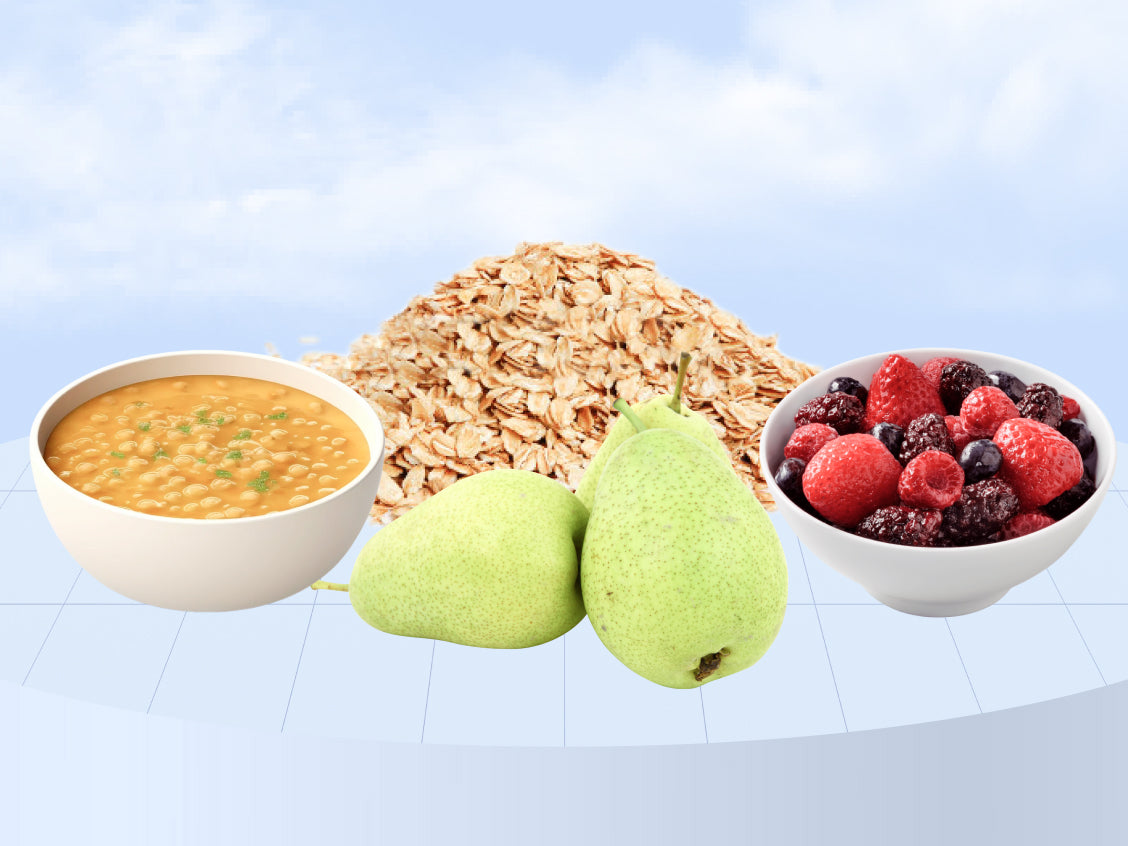

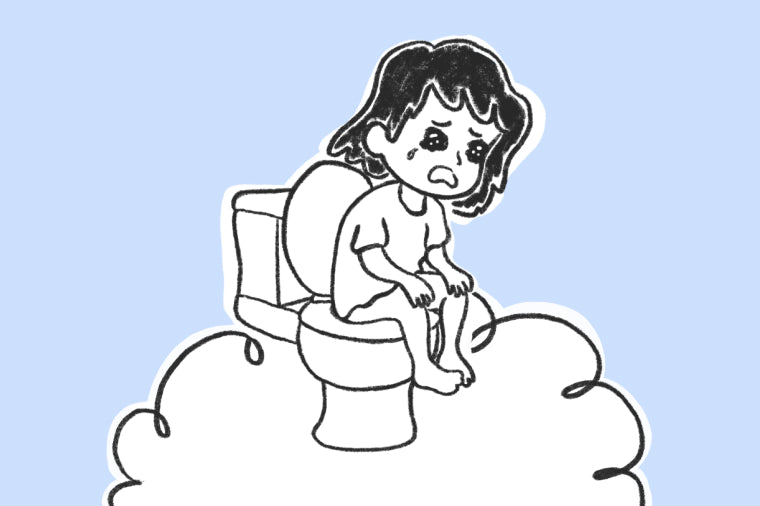




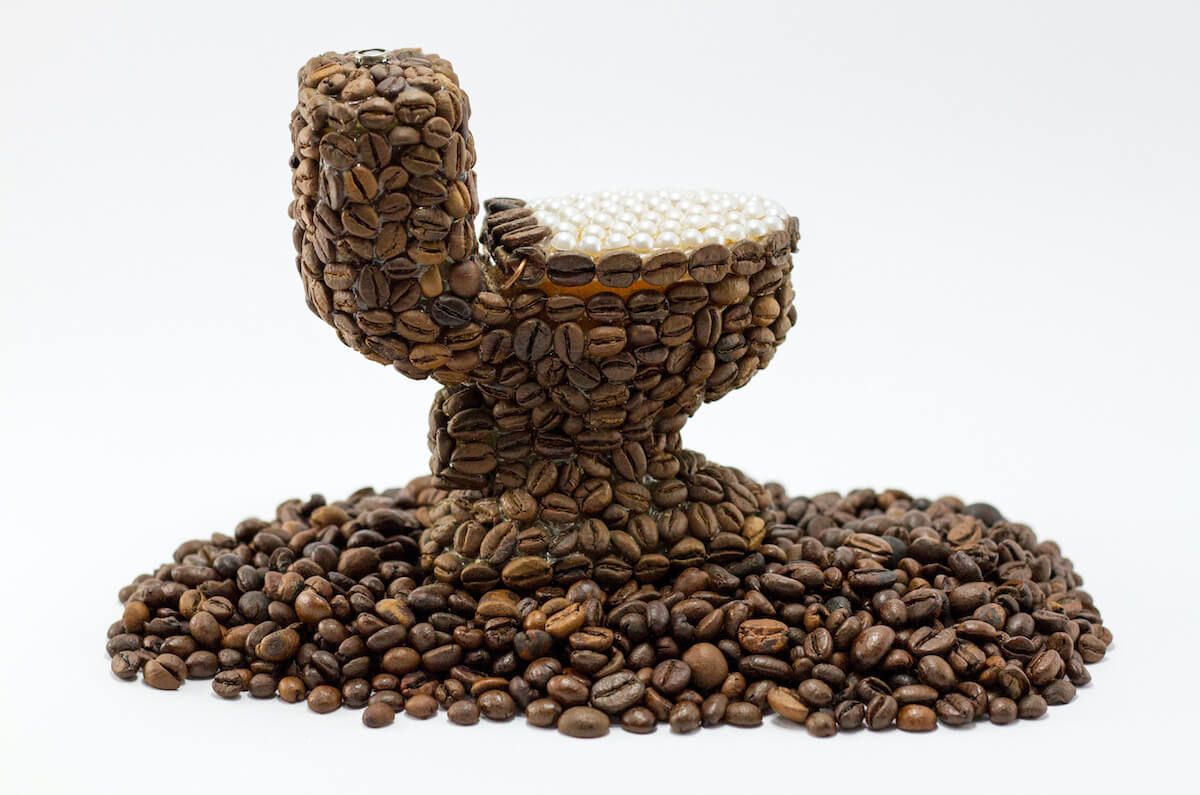



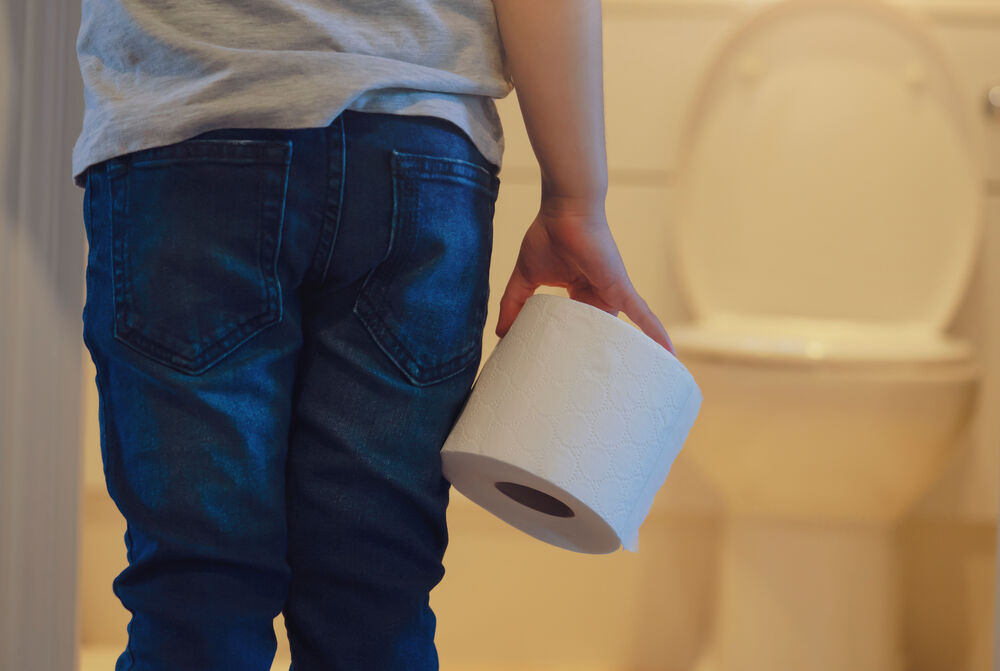







![[Survey] How Long Should You Date Before You Defecate?](http://hellotushy.com/cdn/shop/articles/how-long-should-you-date-before-you-defecate-hero.jpg?v=1611359305)




